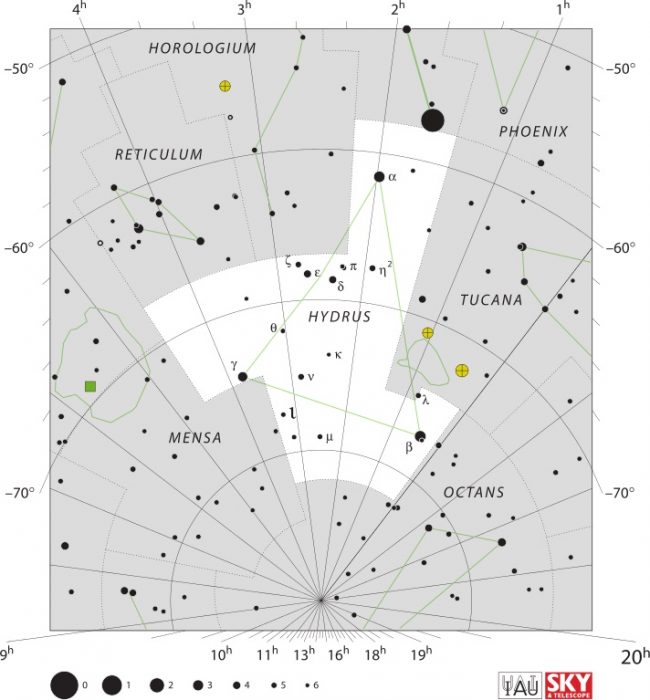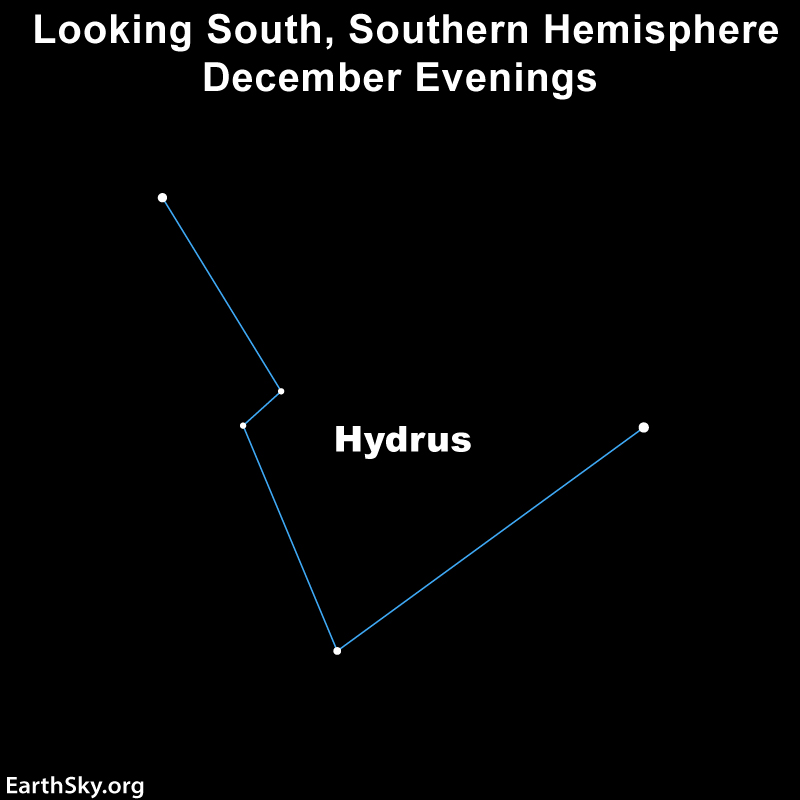Between the starry galactic clumps of the Large and Small Magellanic Clouds in the Southern Hemisphere lies a patch of quiet sky. Few bright stars or deep-sky objects lie here. But this territory is home to the constellation Hydrus.
Hydrus the Lesser Water Snake
Hydrus the Lesser Water Snake is the southern counterpart to Hydra the Water Snake. Hydra is the longest and largest constellation in the sky. Hydrus, on the other hand, is lesser in all ways. Hydrus is 61st in size out of the 88 constellations. Hydra has three Messier objects whereas Hydrus has none.
Hydrus lies next to Octans, the constellation that encircles the south celestial pole. The boundaries of the Lesser Water Snake slither back and forth between its neighboring constellations, but its stars are rather dim. You may have difficulty tracing the shape, so dark skies are crucial.
The stars of the Lesser Water Snake
The brightest star in Hydrus is Beta Hydri at magnitude 2.82. It’s also the brightest star close to the south celestial pole. Although it currently lies 12 degrees from the south celestial pole, around 2,000 years ago it was just two degrees away, due to precession. Beta Hydri lies about 24 light-years away from Earth.
The second brightest star of Hydrus lies at its other end. Alpha Hydri is magnitude 2.86 and lies 71 light-years away. Gamma Hydri is the third brightest and marks the sharp turn in the body of the Lesser Water Snake. Gamma Hydri is magnitude 3.26 and 214 light-years distant. The fourth and fifth brightest stars in Hydrus are of a similar brightness and lie next to each other. Epsilon Hydri is magnitude 4.12 at a distance of 153 light-years and Delta Hydri is magnitude 4.08 at a distance of 140 light-years.

Bottom line: Hydrus the Lesser Water Snake lies between the Large and Small Magellanic Clouds in Southern Hemisphere skies.



